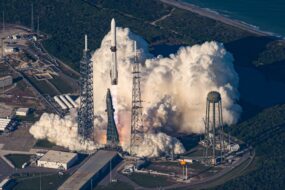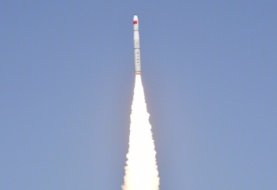The Space Force’s reliance on SpaceX remains stronger than ever.
Space Systems Command awarded seven National Security Space Launch (NSSL) Phase 3 Lane 2 contracts last week. SpaceX won five missions worth a total of $714M, while ULA won the remaining two, worth $428M.
While much of the hardware flying to orbit remains classified, SSC did share details on some of the missions:
- SpaceX will fly the twelfth Wideband Global Satcom mission, which will bolster the US government’s network of global, high-capacity comms.
- ULA will fly the fourth GPS III follow-on mission, which will improve the Department of Defense’s GPS capabilities.
- The two launch providers will also fly one spysat each for the NRO, to high-energy orbits.
Same same, but different: The announcement is reminiscent of a round of contracts awarded in April, in which SpaceX received seven of the nine contracts worth $845.8M, and ULA secured the remaining two worth $427.6M.
Blue Origin, which was selected as one of the providers to compete for the NSSL Phase 3 Lane 2 in April, received no launch opportunities this time around, as the company’s New Glenn rocket awaits certification for national security launches.
SSC did say that Blue Origin would be eligible to win contracts beginning in FY27, depending on the pace of New Glenn’s certification program. The rocket’s next launch will send two Rocket Lab built ESCAPADE spacecraft to Mars, likely before the end of the year.
Looking ahead: While SpaceX received the vast majority of launch contracts in this year’s announcements, SSC has projected its manifest out to 2029, revealing a more even distribution in contracts going forward.
In April, SSC said that SpaceX should anticipate $5.9B in contracts under the NSSL Phase 3 Lane 2 program to launch 28 missions, while ULA could expect $5.4B in contracts to launch about 19 missions.
For its part, Blue Origin was told it could expect to launch as many as seven missions (totaling $2.3B in contracts). But that will depend on Blue receiving its certification.




